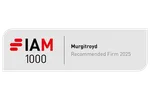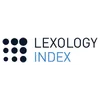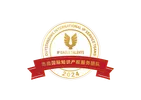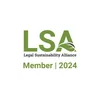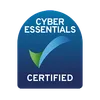FAQs: Trade Secrets
Discover more about the diverse aspects of trade secret law with our frequently asked questions. This resource answers your questions about trade secrets, providing clarity on the definition of a trade secret, how they are protected, their protective scope, and the consequences associated with misappropriation.
Frequently Asked Questions #
What is a trade secret? #
A trade secret is information that has economic value to its owner and which is not known to the public. It must be kept confidential for it to remain valuable. Examples of trade secrets include recipes, formulas, manufacturing processes and customer lists.
How are trade secrets protected? #
Trade secrets can be protected legally through the use of trade secret laws. These laws vary from country to country but generally provide for civil and criminal remedies against any party that misappropriates or discloses a trade secret without authorisation. Companies can protect their trade secrets by ensuring that employees know which information/data is considered to be confidential (e.g. customer lists, manufacturing techniques, etc.) and/or taking physical precautions such as using password-protected databases or locked filing cabinets. Additionally, if discussions with an outside party are going to involve any confidential information, then that can be legally protected by using a non-disclosure agreement.
How long can a trade secret be protected? #
Trade secrets can be protected indefinitely if they remain confidential and the company takes reasonable steps to maintain their secrecy.
What are the penalties for misappropriating a trade secret? #
The penalties for misappropriating a trade secret can vary depending on the jurisdiction. Still, they may include civil penalties such as damages or injunctions or criminal penalties such as fines and imprisonment.
Can trade secrets be licensed? #
Yes, trade secrets can be licensed to another party, allowing the licensee to use the information in exchange for a fee or other consideration. Licensing is an essential way of protecting and monetising trade secrets. It also allows companies to benefit from shared resources and expertise.
What is the best way to protect trade secrets? #
The best way to protect trade secrets is to keep them confidential by taking physical precautions such as using password-protected databases or locking filing cabinets, and also legally protecting them by using a non-disclosure agreement. Additionally, it is vital to monitor who has access to the information and to ensure that anyone with access is aware of their obligations not to disclose the secret. Finally, it is essential to keep records of when and how the trade secret was acquired, as this could be used in any legal proceedings regarding its misuse
What are the differences between a trade secret and a patent? #
A trade secret is information which is kept confidential and has economic value. At the same time, a patent protects an invention which is published as part of its examination and granting procedure. Patents provide protection for inventions by giving the inventor the right to prevent others from using them for a certain period of time. Trade secrets do not grant any exclusive rights but rather rely on keeping the secret in order to maintain its value.
Can a trade secret be patented? #
Yes, under certain circumstances. If the trade secret meets the criteria for patentability—namely that it is novel, useful and non-obvious—then it can be patented. However, once a trade secret has been made public through the patent application process, it then loses its status as a trade secret and cannot be protected as such.
What happens when a trade secret is no longer secret? #
Once a trade secret is no longer secret, it loses its value and can no longer be legally protected as such. At this point, the best course of action is to seek patent protection if possible (although that could be difficult in countries that don’t have a grace period within which a patent application can still be filed after the invention has been made public) or to otherwise find ways to maintain the economic value of the information. This could include finding other potential uses for it or marketing the information as a product or service.
What are the benefits of trade secret protection? #
The main benefit of trade secret protection is that it can provide indefinite protection for valuable information without having to go through the expensive and time-consuming process of obtaining a patent. Additionally, trade secrets can be licensed to other parties for a fee or other consideration, which can be an important source of revenue for the company. Finally, trade secret protection allows companies to keep their competitive edge by preventing others from gaining access to valuable information.
What should I do if I think my trade secret has been misappropriated? #
If you believe your trade secret has been misappropriated, it is important to take immediate action. The first step should be to contact an attorney or solicitor who specialises in trade secret law. They will be able to advise you on the best course of action and help you protect your rights. Additionally, you may wish to consider filing a lawsuit against any party that has misused or disclosed your trade secret without authorisation.
What are the risks of trade secret protection? #
The main risk of trade secret protection is that it relies on keeping the information confidential and taking reasonable measures to maintain its secrecy. If these steps are not taken, or if the information is made public, then it can no longer be legally protected as a trade secret. Additionally, if a party succeeds in reverse engineering your trade secret, then they may be able to avoid liability for misappropriation.
For these reasons, it is important to take appropriate steps to ensure that your trade secrets remain confidential and protected, such as using a non-disclosure agreement and taking physical precautions. Additionally, it is important to monitor who has access to the information and regularly review its security measures. By taking these steps, you can minimise the risk of trade secret misappropriation and maximise the value of your information.





